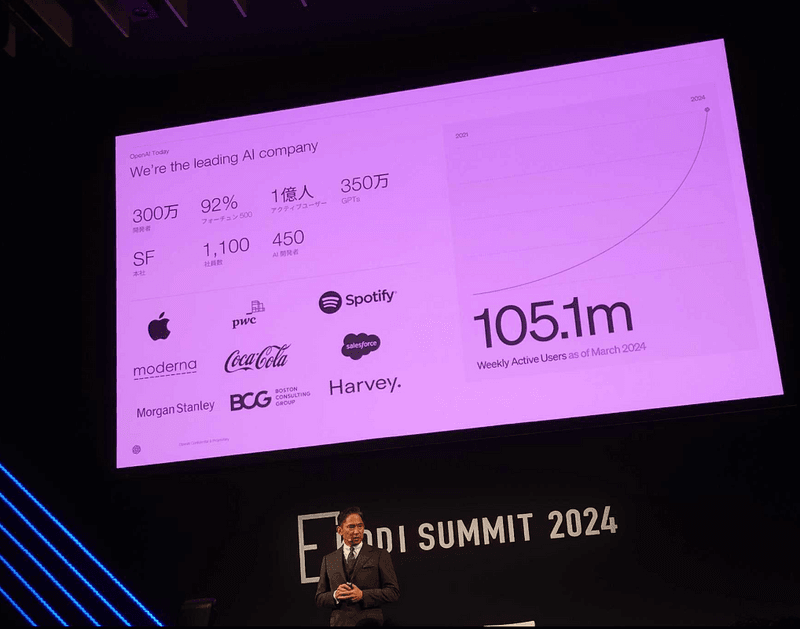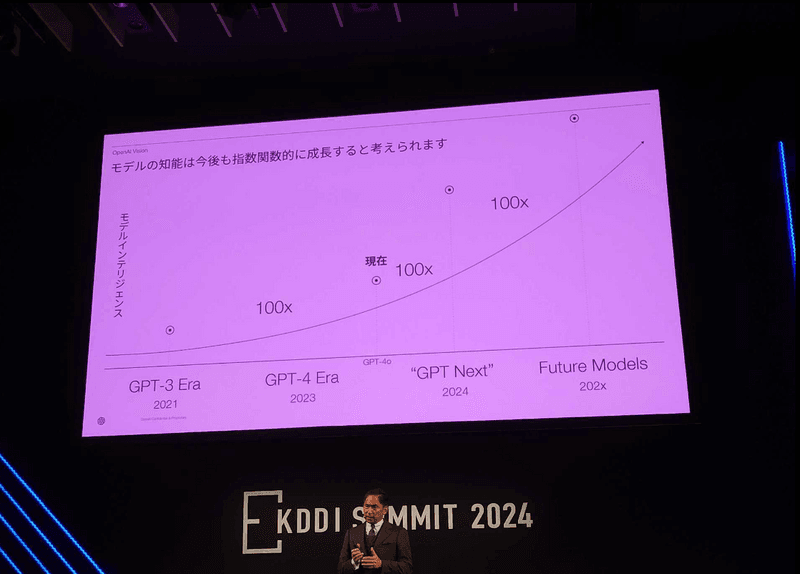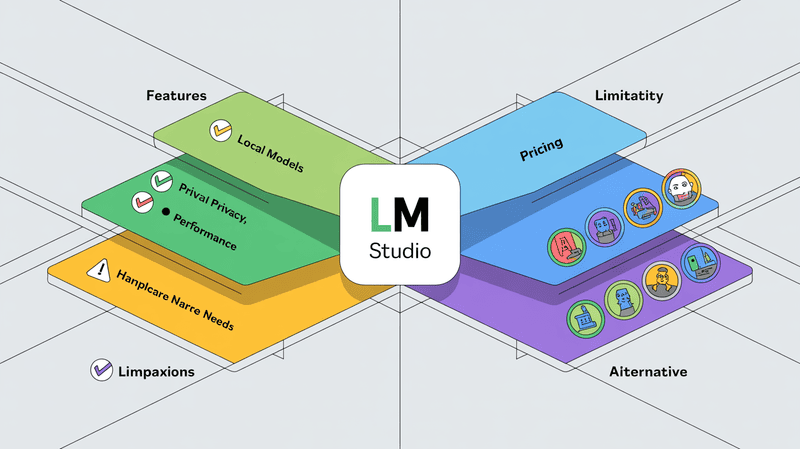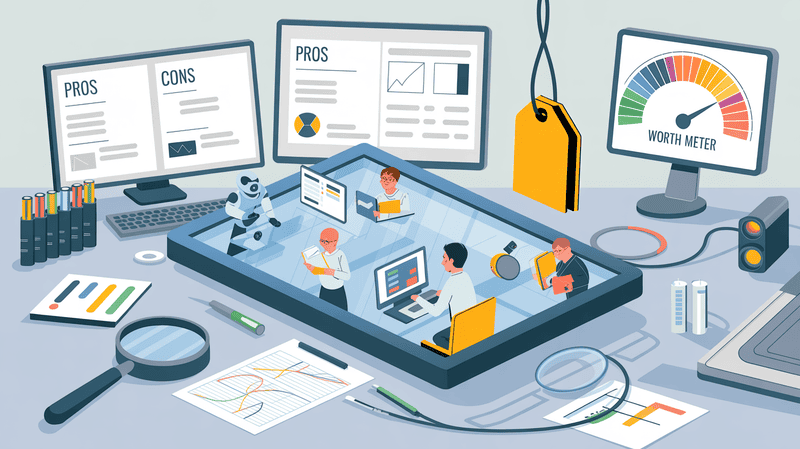Get ready for some mind-blowing news about AI! Remember how fast computers have been getting? Well, AI is about to take an even bigger jump forward. OpenAI, the company behind some of the coolest AI stuff out there, is cooking up something really exciting. They're working on new AI that can do things we never thought possible.
Want to know what's coming next in the world of AI? Curious about how it might change your life? We've got the scoop on what's around the corner, and trust us, it's pretty amazing. From smarter chatbots to AI that can think in new ways, there's a lot to look forward to.
Let's take a peek into the future of AI!
What is the New ChatGPT Model?

The next evolution of ChatGPT, tentatively called "GPT Next," was unveiled at the KDDI SUMMIT 2024 business event on September 3rd. Tadao Nagasaki, CEO of OpenAI Japan, took centre stage to reveal this groundbreaking development in AI technology.
Key points of the announcement:
GPT Next is slated for release in the near future
It's projected to be significantly more powerful than its predecessors
The model promises exponential growth in AI capabilities
Nagasaki's presentation highlighted:
The rapid adoption of ChatGPT, with over 200 million active users
The success of ChatGPT Enterprise among major corporations
OpenAI's commitment to advancing AI technology
During his speech, Nagasaki drew comparisons between GPT-3 and GPT-4o, emphasizing a nearly 100-fold increase in performance. He then projected a similar leap forward for GPT Next, suggesting it could be up to 100 times more powerful than GPT-4o.
The Announcement also touched on:
GPT Next's enhanced multimodal capabilities
Improvements in the model's architecture and learning efficiency
The potential for GPT Next to handle various data formats more effectively
Why is GPT-Next Significant?

OpenAI is set to revolutionize the AI landscape with its upcoming model, dubbed "GPT Next." This new iteration promises to be a significant leap forward in AI capabilities, building upon the success of its predecessors.
Key features of GPT Next:
Exponential performance increase
Enhanced multimodal capabilities
Improved learning efficiency
The development of GPT Next showcases OpenAI's commitment to pushing the boundaries of AI technology. According to Tadao Nagasaki, CEO of OpenAI Japan, this new model is expected to deliver a performance boost of nearly 100 times compared to GPT-4o.
GPT Next's advancements are not just about raw computational power.
The model incorporates:
Refined architecture
Increased effective computational load
Enhanced learning algorithms
These improvements allow GPT-Next to process and understand various data formats more effectively, including text, audio, and images. The exponential growth in AI technology means that GPT Next will likely offer capabilities that were previously unimaginable.
Key Features and Capabilities of GPT Next

GPT Next, OpenAI's upcoming AI model, is set to introduce groundbreaking advancements in artificial intelligence. This new iteration promises to significantly outperform its predecessors, offering a range of enhanced capabilities.
One of the most notable features of GPT Next is its exponential performance boost:
Projected to be 100 times more powerful than GPT-4o
Enhanced processing speed and efficiency
Improved ability to handle complex tasks
The model's advanced multimodal capabilities represent a significant leap forward in AI technology. GPT Next is expected to seamlessly integrate various data formats, allowing for more natural and context-aware interactions with users.
Another key improvement lies in GPT Next's refined architecture:
Optimized neural network design
Improved learning algorithms
Enhanced ability to generalize across different domains
GPT Next's increased computational efficiency is set to revolutionize AI applications. This advancement could lead to more responsive real-time applications and reduce training time for new skills, making AI more accessible and versatile.
The expanded knowledge base of GPT Next is another crucial feature:
Broader understanding of diverse topics
More up-to-date information processing
Improved context awareness in responses
These advancements in GPT-Next are expected to create new possibilities in AI applications, potentially transforming industries and reshaping how we interact with AI systems in our daily lives.
What’s Coming After GPT-Next?

OpenAI is already looking beyond GPT-Next to push the boundaries of artificial intelligence even further. Two major projects that are heavily rumoured are: Project Strawberry and GPT-5.
Project Strawberry, rumoured to be OpenAI's next big project, focuses on enhancing AI's reasoning capabilities.
This ambitious project aims to:
Improve data interpretation and user pattern analysis
Enable autonomous internet navigation for deep research
Solve complex, unfamiliar problems
Reduce AI "hallucinations" or errors in responses
OpenAI plans to release Project Strawberry in the fall of 2024, with reports suggesting it's already complete and has been showcased to government officials. The model's enhanced reasoning approach could lead to more accurate and thoughtful responses, especially in complex scenarios.
Following Project Strawberry, GPT-5 is set to take centre stage as the next major iteration in the GPT series.
This powerhouse model is expected to bring several advancements:
Improved language comprehension and response accuracy
Multimodal capabilities for processing various data formats
Advanced "smarter thinking" for deeper analysis and reasoning
Significantly larger scale, potentially reaching 1.5 to 5 trillion parameters
Expanded context windows for better information retention
While GPT-5's release date remains uncertain, with estimates ranging from 2025 to 2026, it promises to be a transformative leap in AI technology.
As these projects unfold, they have the potential to reshape industries and redefine our interaction with AI systems, marking exciting times ahead in the world of artificial intelligence.
Conclusion
To wrap it up, at the KDDI SUMMIT 2024 on September 3rd, Tadao Nagasaki, CEO of OpenAI Japan, unveiled "GPT Next," the latest evolution of ChatGPT. This new model is projected to be 100 times more powerful than GPT-4, featuring enhanced multimodal capabilities, improved learning efficiency, and a refined architecture.
GPT Next promises exponential performance increases, better processing of various data formats, and more natural user interactions.
Looking beyond GPT Next, OpenAI is rumored to be working on Project Strawberry, set for release in fall 2024. This project aims to enhance AI reasoning, reduce errors, and enable autonomous internet navigation for deep research.
Further ahead, GPT-5 is anticipated to bring even more significant advancements, including improved language comprehension, multimodal processing, and a massive increase in scale to potentially 5 trillion parameters.
While its release date is uncertain, estimates range from 2025 to 2026. These developments signal a transformative period in AI technology.
FAQs
1. What is GPT Next?
GPT Next is OpenAI's upcoming AI model, set to be 100 times more powerful than GPT-4o. It features enhanced multimodal capabilities, improved learning efficiency, and refined architecture, marking a significant leap in AI performance and user interaction.
2. Is GPT-4o released in India?
Yes, GPT-4o is available in India. Users can access it through various platforms, including ChatGPT, by subscribing to services offering GPT-4o integration. It’s accessible for businesses, developers, and individuals looking to benefit from its advanced AI capabilities.
3. Will there be a GPT-5?
Yes, GPT-5 is anticipated as the next major AI model from OpenAI. It's projected to feature improved language comprehension, multimodal processing, and a much larger scale, possibly reaching 5 trillion parameters. Its release is expected between 2025 and 2026.



